Rose Soap Recipe (Valentine’s Day Soap)
As a participant in the Amazon Services LLC Associates Program and other affiliate programs, Easy Homemade Life may collect a share of sales or other compensation from the links on this page. This comes at no additional cost to you, and all the prices and availability are accurate at the time of publishing.
Romantic picnic or dinner – done. Are you looking for other ways to pamper yourself and your loved ones this Valentine’s Day? This melt and pour rose soap is the perfect Valentine’s Day soap! With this handmade rose soap recipe, your skin will feel silky-smooth and luxurious. It’s quick, easy, and will make your skin smell beautiful. You only need 5 ingredients and twenty minutes of active hands-on time!
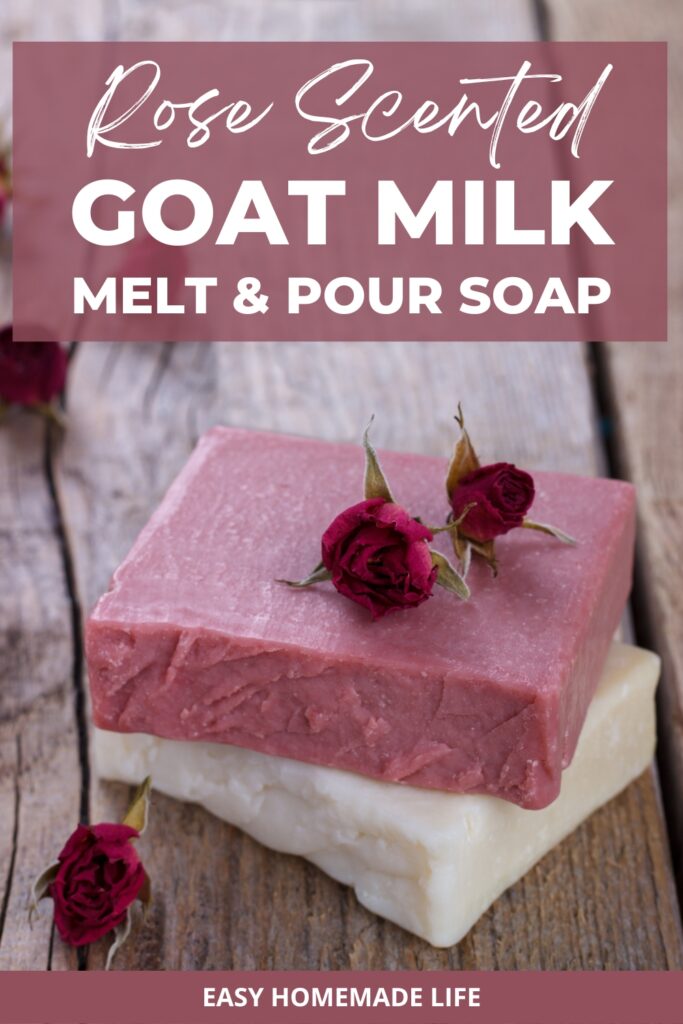
Rose Soap Benefits
There are so many benefits of rose soap. That’s because this homemade rose soap recipe uses rose geranium essential oil. Rose geranium essential oil has anti-inflammatory properties that may fight eczema. It also has antibacterial and antifungal properties that protect against skin infections and diseases. Rose geranium essential oil even has antioxidants that fight aging – and what’s not to love about that?
But the best part of this rose soap is that you don’t have to worry about handling lye. That’s because this rose soap recipe uses a melt-and-pour method. With the melt-and-pour method, you’re using a premade soap base. And with the melt-and-pour method, you have a much shorter curing (drying) time.
Don’t worry if you’re running last minute. With such a quick process, you can make this Valentine’s day melt and pour soap the day before Valentine’s Day – or even on Valentine’s Day itself!
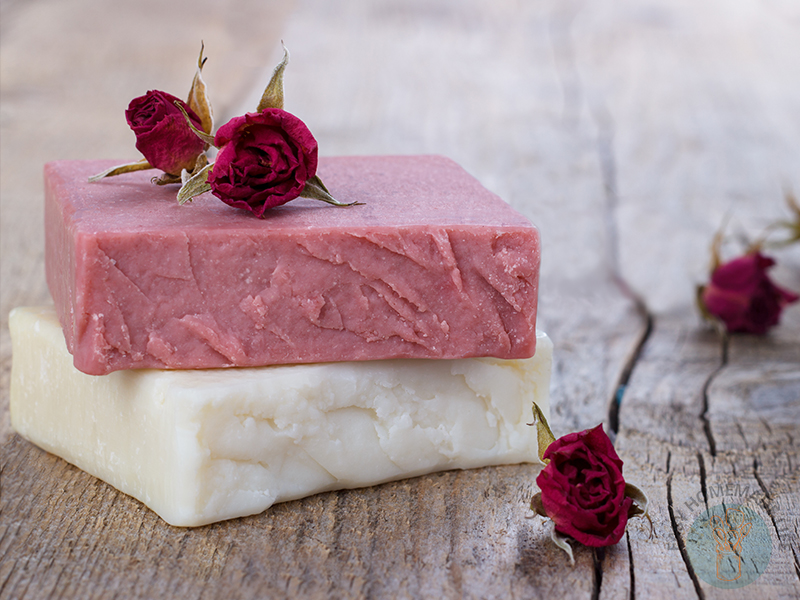
How to Make Rose Soap with Goat Milk
I know it’s Valentine’s day every year when I start making this soap and red velvet cake. They always set the tone.
All you need to do is gather 5 ingredients, and you’re halfway to making Valentine’s Day melt and pour soap. It takes just 20 minutes of prep time. And then, let your soap dry for two hours.
Tools
- Cutting board
- Chef’s knife
- Double boiler or microwave
- Bowl
- Measuring spoons
- Fork or whisk
- Small spray bottle
- High-proof vodka or rubbing alcohol, optional
- Soap mold
- Tray or baking sheet
- Soap wrap
Materials
- Goat milk melt and pour soap base – This is the base for your rose soap bar. It contains goat’s milk which is packed with skin-boosting substances such as lactic acid, essential fatty acids, and vitamin A. These exfoliate your skin, brighten and keep your skin moist. You can substitute this with a shea butter soap base or another white soap base. When you use a soap base, you don’t need lye!
- Mica powder – Mica powder is a powder made from a stone mineral. It acts as a soap colorant and adds shimmery colors to your rose bar soap.
- Rose geranium essential oil – Rose geranium essential oil is a budget-friendly essential oil that adds a rose-like fragrance to your rose bar soap. You can substitute it with rose absolute essential oil if you prefer. However, it’s much more expensive.
- Balsam essential oil – Balsam essential oil is a budget-friendly essential oil that adds a vanilla-like fragrance to your rose soap bar. You can substitute it with vanilla absolute essential oil if you prefer. However, it does cost more.
- Lemon essential oil – Lemon essential oil adds a fruity, lemony fragrance to your rose soap bar. You can substitute it with other citrus essential oils, including bergamot, grapefruit, and lime essential oil.
Wondering where to find the materials? You can find them at natural health food markets. Or, to save time, you can shop for them online using the affiliate links I provided above for your convenience.
Loving the goat milk and essential oils combo? After soaping up, your skin will love you for the extra moisture provided in this Goat Milk and Honey Body Scrub!
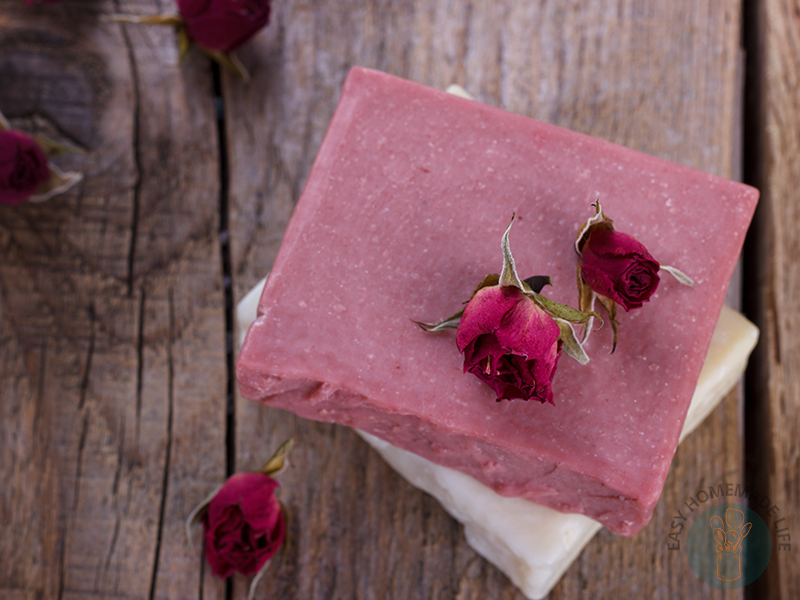
Step-By-Step Directions
Follow these simple directions, and you can’t go wrong!
There are only twenty minutes of active time, but homemade melt and pour soap takes two hours to dry. Even so, if you’re in a pinch, you can even make this as a gift the day before Valentine’s Day or even on Valentine’s Day itself!
Doing a home project together is also one of the cheap date ideas I recommend. It’s also one of the most creative things to do for Valentine’s Day you can try. Make this rose soap together and you’re guaranteed to have fun!
In order to make this goat milk soap recipe, start by cutting the soap base into small blocks, and then melt them in a double boiler or in the microwave, stirring occasionally. Make sure you use just enough heat for the soap base to melt. You don’t want the heat too high though, or it will burn.
Next, add the essential oils, whisking well. Then comes the fun part: adding the mica powder. Sprinkle the mica powder in an even layer over the surface of the mixture. By doing this instead of dumping all the mica powder in a single place, you’ll achieve a nice, even color. Using ¼ teaspoon of the mica powder will dye the entire batch of hand soap a dark pink. Whisk gently so that air bubbles don’t form on top.
Place the soap mold on a tray or baking sheet and fill it with the liquid soap. If bubbles form on top, you can spritz the top with a spray bottle that contains high-proof vodka or rubbing alcohol. This will get rid of the bubbles.
Let the soap rest and firm up for about 30 minutes, then move it to a different area away from direct sunlight and let it harden for another 1.5 hours or overnight before you remove it from the mold. If you’re short on time, placing the mold in the refrigerator or freezer will speed up the process.
Pop the hand soap out and cut it with a sharp chef’s knife into 2-inch bars.
Use your new rose soap immediately or enclose it within a tight layer of plastic wrap or eco-film for later use or to gift to your mom, grandma, and all your friends.
Melt and Pour Rose Soap Variations
Want to make 4 pink and 4 white soap bars instead? You can do this by separating half of the liquid base into a bowl while transferring the rest to a mold. Add ½ teaspoon of the mica powder to the bowl and mix it in. Then mold and let it harden.
You can also adjust the amount of mica powder to create different colors. Less mica produces a paler hue, while more makes a deeper, darker hue. The sky is the limit!
You can even finish the soap in different ways or combine colors with swirls. Divide the batch of soap into as many bowls as you want and adjust the amount of mica to create different hues. Use the original ratio of 1 pound of soap base to 1 tsp mica as a reference point and go from there.
One thing to note is that melt and pour soaps do act differently than cold-processed soaps. Generally, you can’t texture the top of melt and pour soap with a glycerin base because it’s rather thin. However, goat milk soap has more viscosity to play with as it hardens, so feel free to push it around a bit. Plus, with a goat milk base, there is more natural texture than with a non-dairy base such as glycerine.
Another way you can vary your Valentine’s Day soap is to use different soap molds to create different shapes. I made this rose soap in a loaf mold, which I then allowed to set before cutting it into bars to make a rose bar soap. However, you can use other shapes like circular or oval molds to create a rose hand soap. Of course, heart-shaped ones would be perfect too!
Maybe next year, you’ll be ready to try a cold processed soap recipe. In that case, there’s no better recipe to suggest than the Nerdy Farm Wife’s Valentine Soap with Hearts. It’s a beautiful three-dimensional soap that takes at least four weeks to cure, so plan ahead!
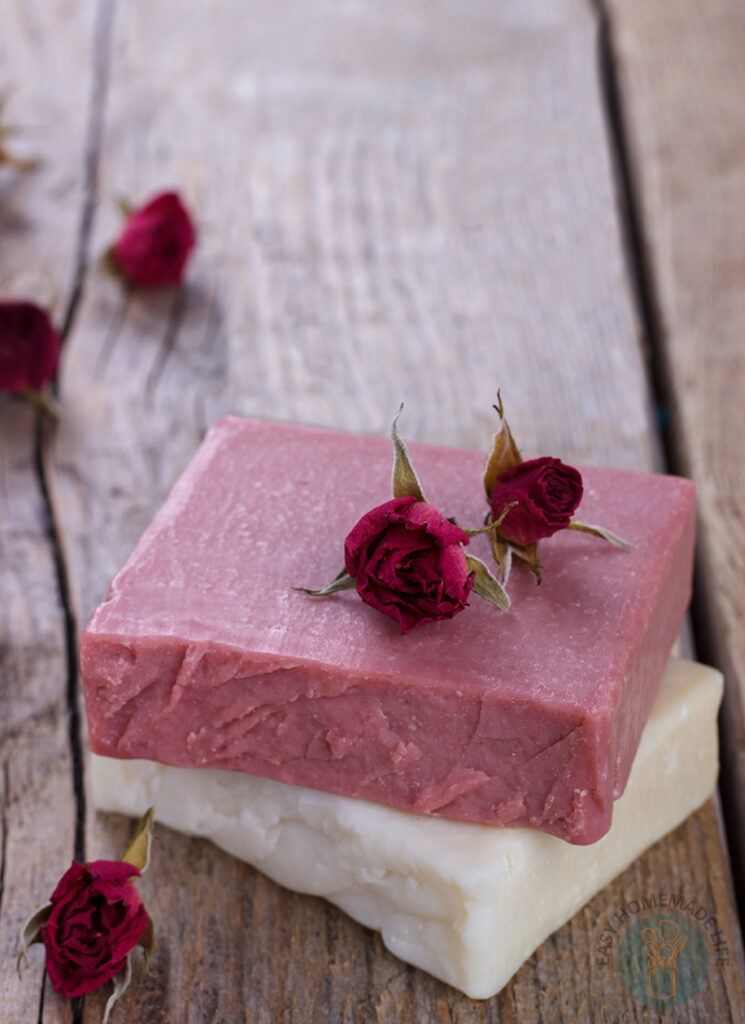
Melt and Pour Rose Soap Recipe FAQ
To make rose scented soap, start by cutting your melt-and-pour soap base into pieces. Then melt the pieces and add a rose-scented essential oil stirring well. Spread the soap colorant evenly over the soap base-essential oil mixture, mixing gently. Pour the mixture into a mold, and let it cool for two hours before cutting it into bars.
Rose soap is good for treating eczema, moisturizing, exfoliating, and brightening skin, and fighting the effects of skin aging.
To color melt and pour soap, add a soap colorant such as mica powder. You could also use commercial soap dyes, but I prefer a safer, natural option like mica.
Melt and pour soap takes only two hours to set. It’s very quick!
Wrap melt and pour soap in eco film or plastic wrap. Then store in a cool, dry area.
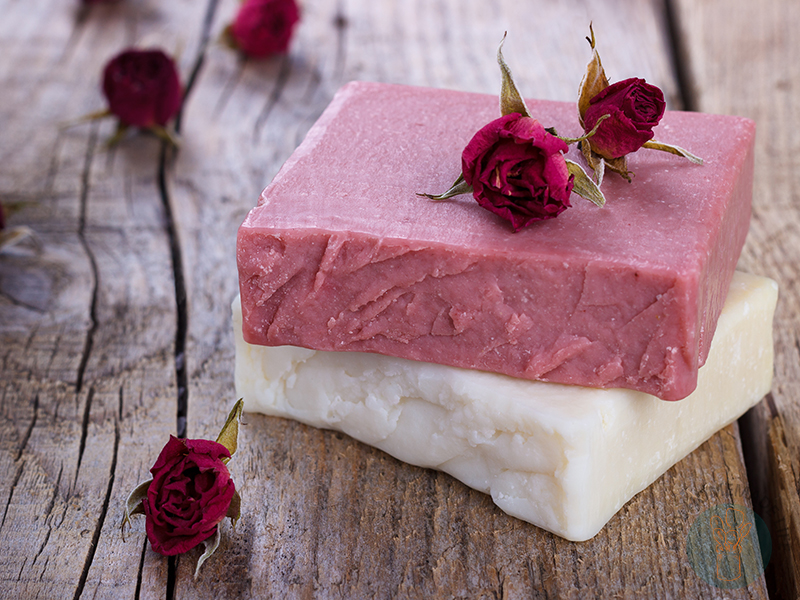
More Easy Melt and Pour Soap Recipes
- Melt and Pour Christmas Soap Recipes give seasonal soap ideas for the Christmas holiday too! Make the perfect Christmas gift with festive colors and a beautiful look. The thoughtful homemade touch will make your gift recipients feel extra special!
- Easy Melt and Pour Recipes for Beginners will help you successfully make soap for the first time with simple step-by-step tutorials. These melt-and-pour recipes are perfect if you’re just starting to make your own handmade soaps. They take so little time and effort; they make soap making a breeze!
- Essential Oil Soap Recipes for Beginners offer fool-proof choices naturally scented with essential oils. Not only do these essential oil soap recipes smell nice, but they also have wonderful therapeutic properties.
Rose Goat Milk Soap Recipe
Equipment
- 1 Cutting board
- 1 Chef’s knife
- 1 Double boiler or microwave
- 1 Bowl
- 1 Teaspoon
- 1 Fork or whisk
- 1 Small spray bottle optional
- 1 High-proof vodka or rubbing alcohol
- 1 Tray or baking sheet
Materials
- 1 pound goat milk melt and pour soap base
- ¼ teaspoon mica powder
- 25 drops rose geranium essential oil
- 10 drops balsam essential oil
- 10 drops lemon essential oil
Instructions
- Cut the soap base into small blocks and melt them in a double boiler over low heat. Stir occasionally until the material is completely liquid. Alternatively, heat in a microwave for 30-second intervals, stirring in-between. Repeat as needed until the base melts entirely.
- Add essential oils, whisk thoroughly.
- Sprinkle mica powder evenly over the top surface, whisk again.
- Arrange the soap mold on a tray, then fill it with the liquid soap. Leave to harden for 30 minutes before moving, then set it out of the way (and out of direct sunlight) and leave for another 1.5 hours or overnight before removing it from the mold.
- Pop it out and cut into 2-inch bars. Use immediately and wrap remaining bars tightly with plastic wrap or eco-film.

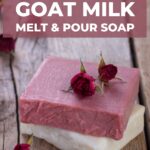
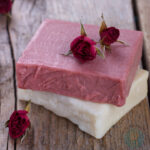
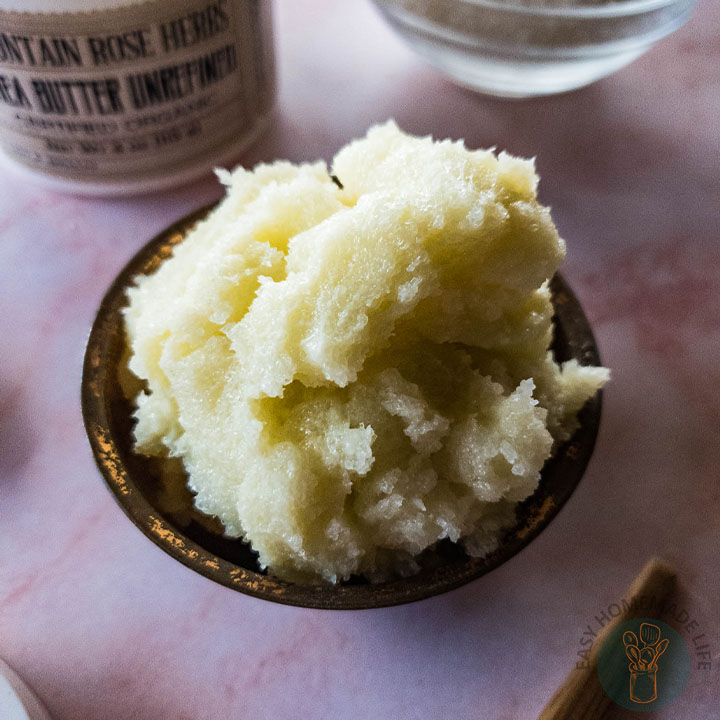
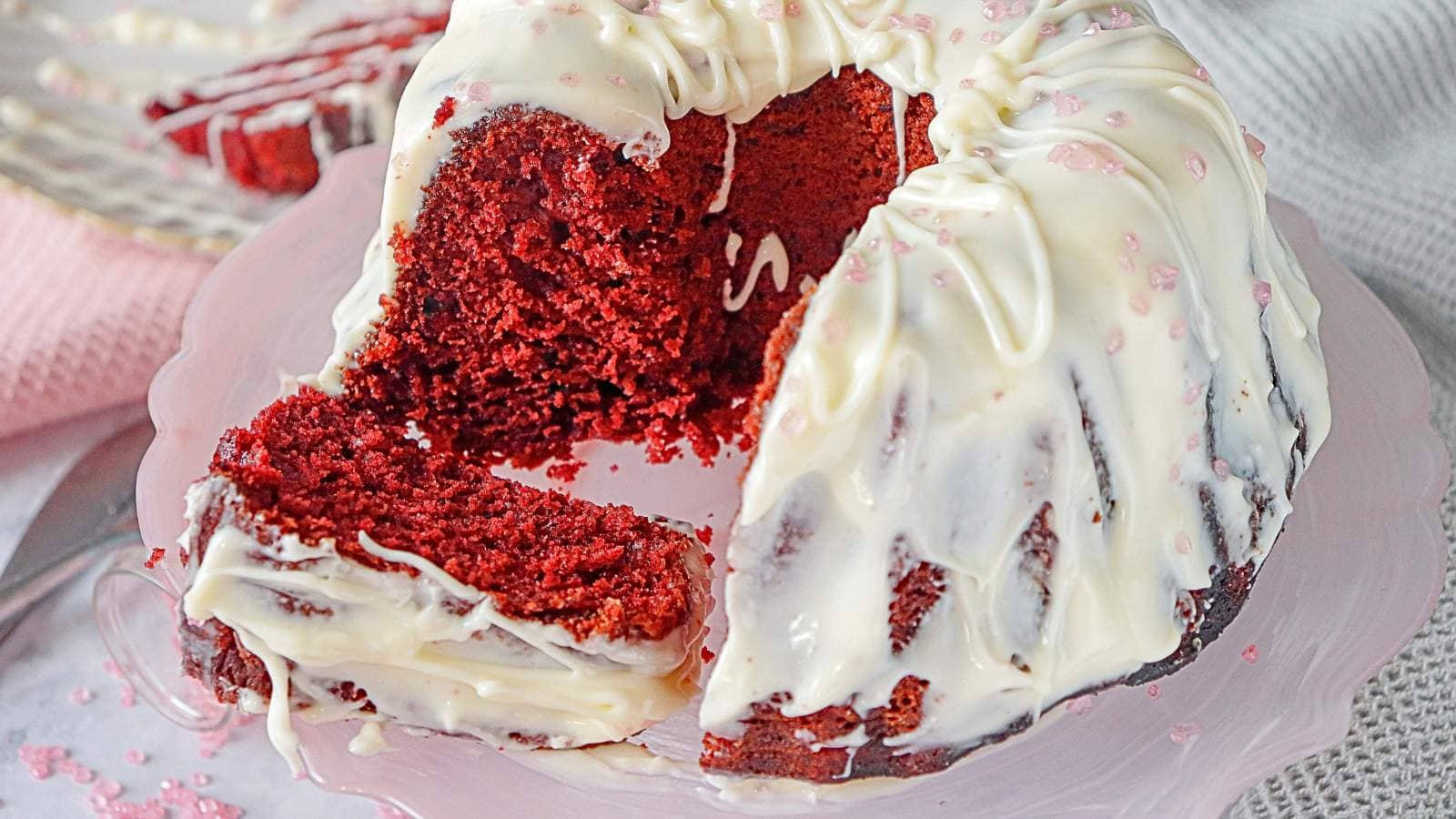
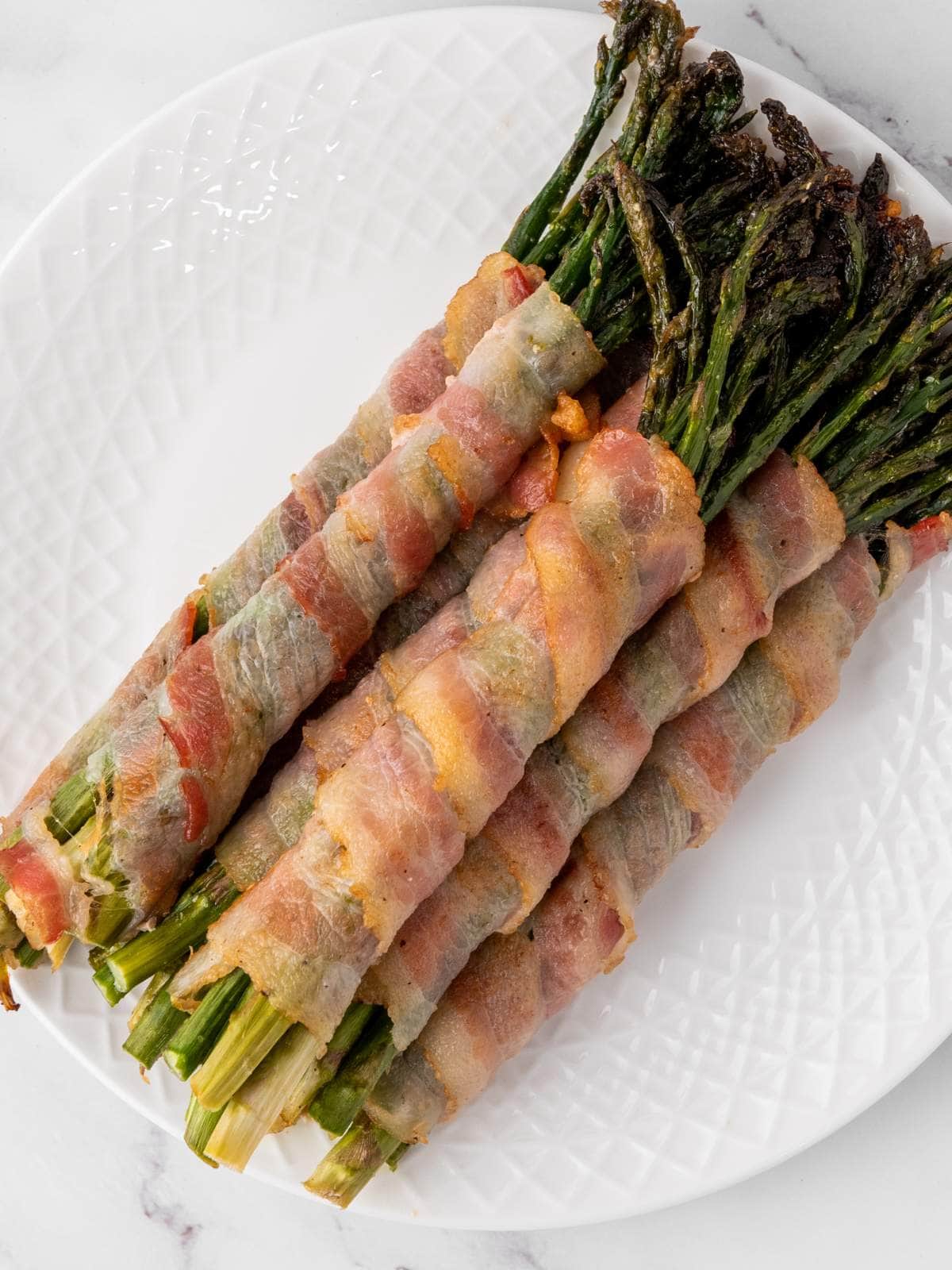

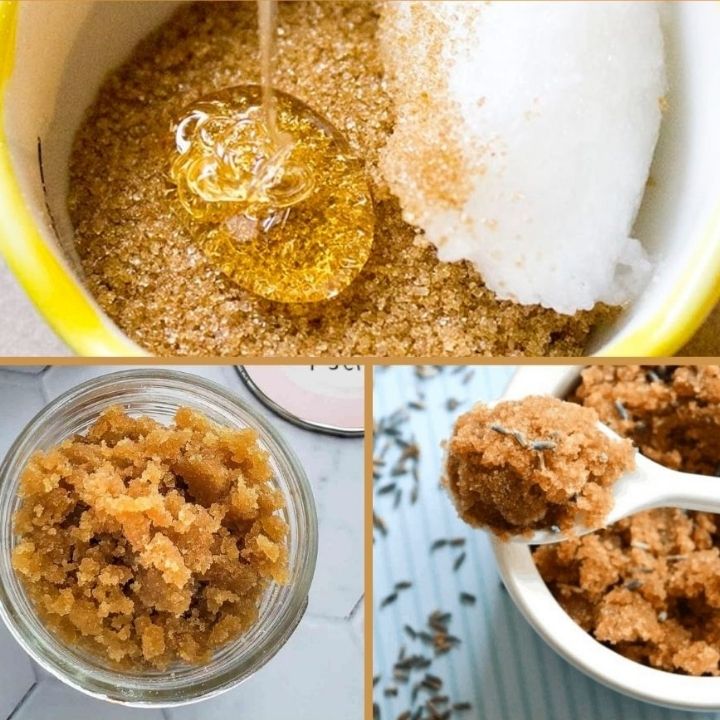
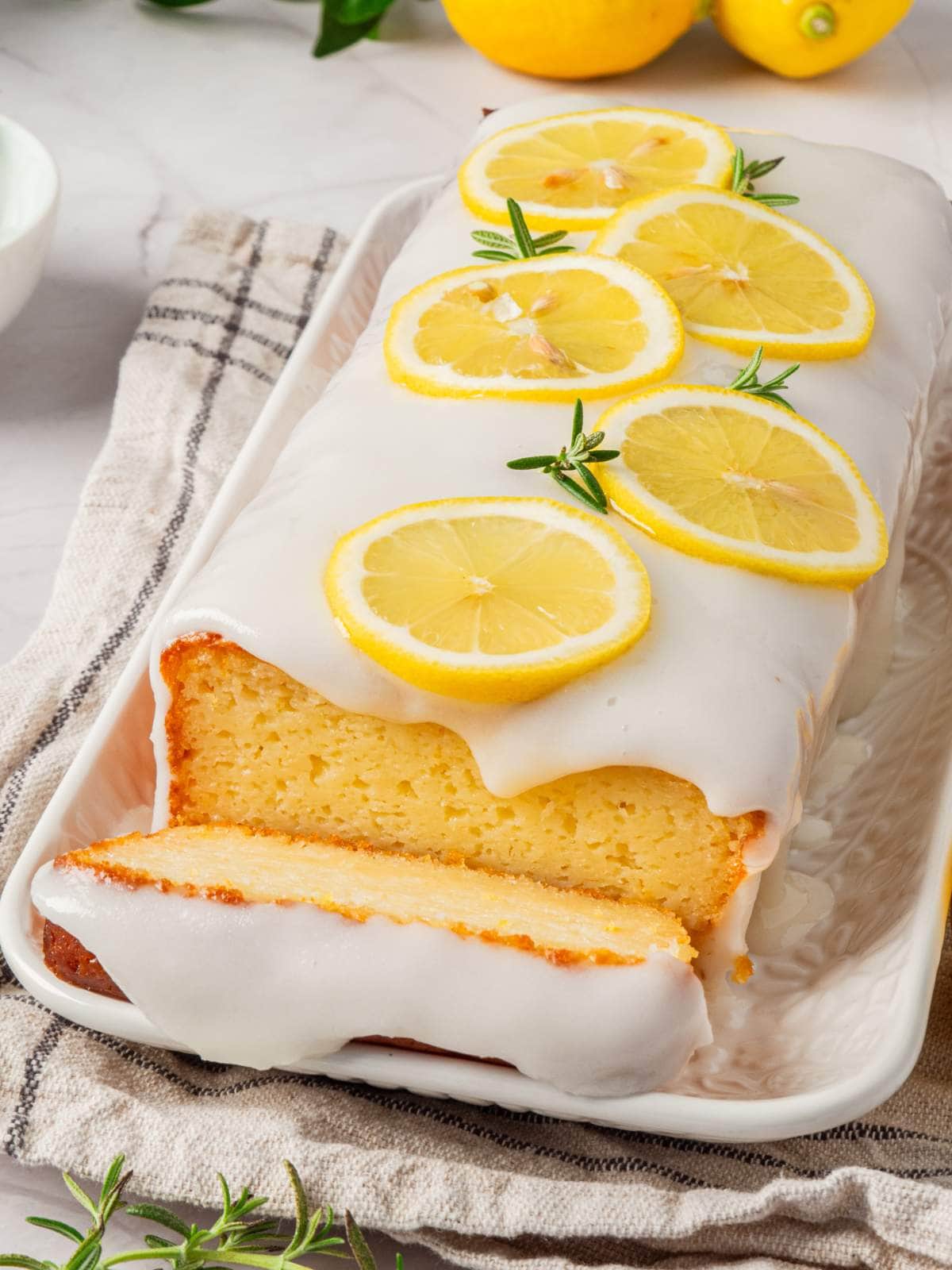
I’ve made lye soaps before but don’t have time before Valentine’s Day. I love how easy melt and pour is! The rose geranium oil smells so good.